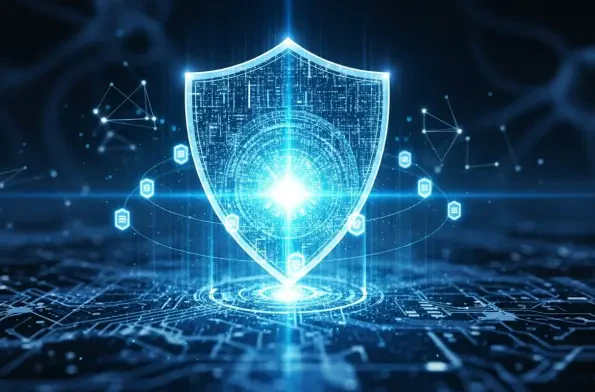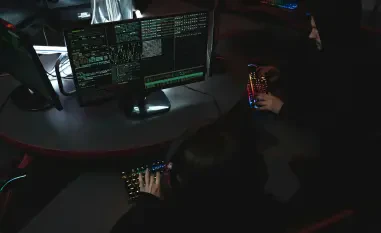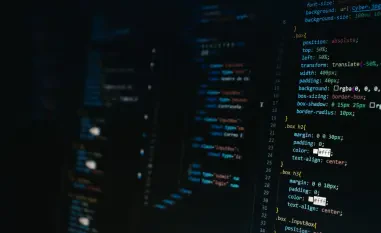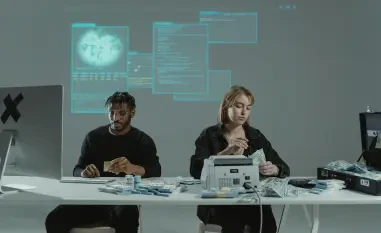In an era where cyber threats lurk beyond traditional network boundaries, imagine a major corporation waking up to find its brand impersonated on social media, customer data leaked on the dark web, and phishing attacks targeting its employees—all within a single day, creating a perfect storm of digital risk. This scenario is not far-fetched but a daily reality for many organizations grappling with external digital risks. Digital Shadows SearchLight and Recorded Future Intelligence Cloud stand as two leading Digital Risk Protection (DRP) platforms designed to combat such threats. By monitoring vast swathes of the internet and providing actionable insights, these tools are indispensable for businesses aiming to safeguard their reputation and data. This comparison delves into their capabilities, highlighting how each addresses the complex cybersecurity challenges of today’s hybrid work environments and AI-driven attacks.
Introduction to Digital Shadows and Recorded Future
Digital Shadows SearchLight and Recorded Future Intelligence Cloud are prominent players in the DRP space, offering specialized solutions to detect and mitigate external cyber threats. Digital Shadows focuses on comprehensive visibility across the open, deep, and dark web, identifying risks like data leaks and brand impersonation with precision. Recorded Future, on the other hand, leverages a massive global threat database to provide contextual intelligence, enabling organizations to anticipate and neutralize risks before they escalate. Both platforms serve a critical purpose in protecting businesses from threats that traditional security tools often miss, such as credential theft and phishing domains.
The relevance of these tools is underscored by the evolving cybersecurity landscape, where remote work and cloud adoption have expanded the digital attack surface. As threats become more sophisticated, often powered by artificial intelligence, organizations need proactive solutions to stay ahead of adversaries. Digital Shadows and Recorded Future address these challenges by offering real-time monitoring and rapid response mechanisms, ensuring that risks are not just detected but also acted upon effectively.
While both platforms aim to enhance digital security, they cater to slightly different organizational needs and operational contexts. Digital Shadows often appeals to enterprises requiring deep visibility and automated remediation, whereas Recorded Future targets those prioritizing intelligence-led strategies with rich contextual insights. This analysis sets the stage for a detailed examination of their features, usability, and limitations to help decision-makers choose the right tool for their specific requirements.
Feature-by-Feature Comparison
Threat Intelligence and Data Coverage
When it comes to threat intelligence, Digital Shadows SearchLight excels with its extensive data collection, scanning millions of sources worldwide across forums, marketplaces, and social media. This broad coverage ensures that risks such as leaked credentials or brand misuse are identified swiftly, often before they cause significant harm. For instance, a financial institution using Digital Shadows might detect a dark web listing of stolen customer data within hours, enabling timely mitigation.
Recorded Future Intelligence Cloud, however, takes a different approach by emphasizing contextualized insights drawn from an unparalleled global threat database. Its strength lies in not just identifying threats but also providing the “why” and “how” behind them, such as linking a phishing campaign to a specific threat actor. A retail company leveraging Recorded Future could gain a deeper understanding of targeted attacks during peak shopping seasons, allowing for strategic defense planning.
While both platforms deliver actionable intelligence, Digital Shadows prioritizes raw volume and speed of detection, ideal for organizations needing immediate alerts. Recorded Future, by contrast, focuses on depth and relevance, catering to those who value strategic foresight in their cybersecurity posture. This distinction in approach shapes how each tool supports proactive threat management.
Automation and Integration Capabilities
Automation is a cornerstone of modern DRP platforms, and Digital Shadows shines with features like automated phishing site takedowns, reducing the manual burden on security teams. Its integration with Security Operations Center (SOC) workflows ensures that alerts are seamlessly fed into existing processes, enhancing response efficiency. For a large enterprise, this means faster disruption of malicious domains without draining internal resources.
Recorded Future also leverages automation through machine learning-driven insights, filtering out noise to prioritize critical alerts. Its collaborative SOC features enable teams to share intelligence and coordinate responses effectively. Additionally, its robust integration with Security Information and Event Management (SIEM) and Security Orchestration, Automation, and Response (SOAR) systems allows for a cohesive security ecosystem, beneficial for organizations with complex infrastructures.
Comparing the two, Digital Shadows offers a more hands-off approach to remediation, particularly for phishing threats, while Recorded Future emphasizes intelligent prioritization and teamwork within SOC environments. Both platforms excel in integrating with broader security tools, but their automation strengths cater to different operational priorities—rapid action versus informed decision-making.
Target Audience and Usability
Digital Shadows primarily targets large enterprises with intricate security needs, offering deep customization and comprehensive monitoring. However, its sophisticated interface and deployment process may pose challenges for smaller teams or those lacking technical expertise. A multinational corporation might find its capabilities indispensable, yet a mid-sized business could struggle with the complexity.
Recorded Future, while also appealing to enterprises, has a broader potential audience due to its focus on actionable intelligence that can inform strategic planning. Nevertheless, its advanced features and detailed analytics can present a steeper learning curve, particularly for non-technical users or smaller organizations. A small or medium-sized business (SMB) might appreciate its insights but find the platform overwhelming without dedicated support.
In terms of usability, both platforms prioritize functionality over simplicity, which can limit accessibility for less-resourced teams. Digital Shadows’ strength lies in tailored solutions for complex environments, whereas Recorded Future’s interface supports strategic users willing to invest time in mastering its depth. Organizations must weigh technical capacity against the benefits each tool offers when considering adoption.
Challenges and Limitations
Adopting Digital Shadows comes with notable challenges, particularly its higher cost structure, which may exclude smaller organizations from leveraging its full potential. The platform’s focus on large-scale enterprises means that SMBs might find it less accessible or cost-prohibitive. Additionally, while its automation is robust, over-reliance on such features without human oversight could occasionally lead to missed nuances in threat analysis.
Recorded Future also faces hurdles, including premium pricing that can strain budgets, especially for smaller firms. Its complexity and learning curve may deter teams without dedicated cybersecurity expertise, and some users might find its focus on intelligence over direct remediation limiting. Scalability remains a concern for both platforms, as resource demands can escalate with organizational growth or evolving threat landscapes.
Beyond financial and technical barriers, ethical considerations arise in balancing automation with manual intervention. Both tools risk overlooking context-specific threats if human judgment is sidelined. Furthermore, gaps such as limited takedown services in certain scenarios for Recorded Future or narrower focus areas in Digital Shadows highlight the need for complementary security measures to ensure comprehensive protection.
Conclusion and Recommendation
Looking back, the comparison between Digital Shadows and Recorded Future revealed distinct strengths and trade-offs in their approaches to digital risk protection. Digital Shadows stood out for its extensive data coverage and automated remediation, particularly in rapid phishing site takedowns, while Recorded Future impressed with its contextual threat intelligence and strategic insights. Both shared robust integration capabilities but differed in target audience, with Digital Shadows catering more to complex enterprise needs and Recorded Future offering broader appeal despite its learning challenges.
For organizations moving forward, the choice hinges on specific priorities and resources. Enterprises requiring immediate visibility and action, especially in high-risk industries like finance, should consider Digital Shadows as a primary tool for its speed and depth. Those focused on long-term, intelligence-driven defense, such as government entities or tech firms, might find Recorded Future’s nuanced insights more aligned with their goals.
As a next step, businesses are encouraged to conduct pilot tests or request tailored demos to assess real-world performance against their unique risk profiles. Aligning the selection with budget constraints and operational capacity will be crucial, as will investing in staff training to maximize platform benefits. Exploring hybrid approaches—combining elements of both tools or supplementing with managed services—could also provide a balanced solution to navigate the ever-shifting landscape of cyber threats.













